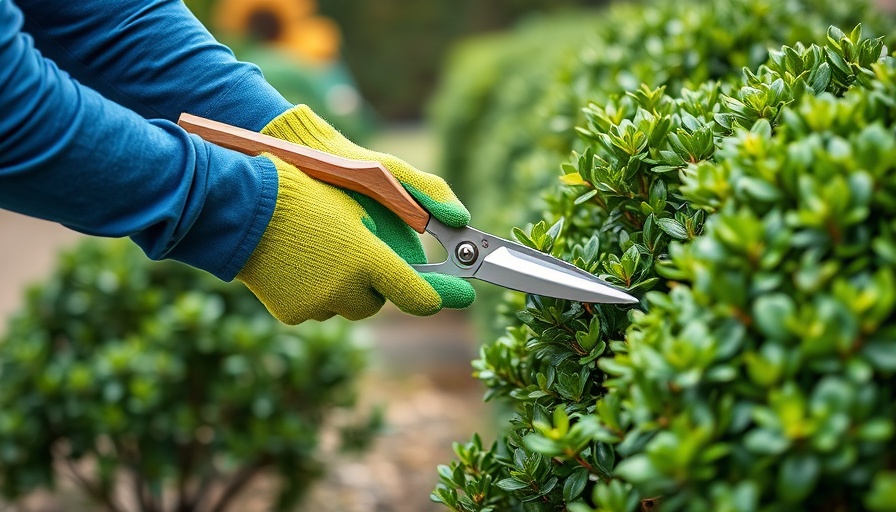
Unlocking the Potential of Your Boxwood Shrubs
Boxwood shrubs (Buxus spp.) are often likened to a blank canvas for gardeners, offering a unique opportunity for creativity in landscape design. When skillfully crafted, these shrubs can enhance your garden, transforming it from ordinary to extraordinary. However, their growth can sometimes lead to an unkempt appearance if left unchecked—hence the importance of mastering the art of pruning.
Why Prune Boxwoods? The Aesthetic and Health Benefits
Pruning boxwoods serves two primary purposes: aesthetics and health. Just as a haircut can improve our appearance, regular pruning keeps boxwoods looking neat and tidy. Without intervention, growth patterns can become uneven, resulting in an unattractive and chaotic look. By shaping your boxwoods, flexibility is restored; whether you prefer a rounded design or a more angular topiary, the choice is yours.
Health is equally crucial when it comes to pruning. As boxwoods grow thicker, airflow between stems diminishes, creating a perfect environment for diseases and pests. Over time, uncut shrubs can accumulate dead or damaged branches, posing risks to the overall health of the plant. Proper pruning allows for improved air circulation and light penetration, minimizing the likelihood of disease and promoting growth.
When is the Best Time to Prune Boxwoods?
Timing is essential in the world of gardening. The ideal time for pruning boxwood shrubs depends largely on the type of pruning required. For shaping, late winter to early spring is optimal, just before new growth begins. This period allows the plants to recover quickly and thrive throughout the growing season. Conversely, if you notice dead or diseased branches, these can be trimmed away at any time, irrespective of season.
Essential Tools for Pruning Boxwoods
Before you grab the shears, ensure you have the right tools on hand. For pruning boxwoods, a pair of sharp hand pruners is ideal for small cuts, while loppers will come in handy for thicker branches. Additionally, a pruning saw might be necessary for larger shrubs. Always make sure your equipment is clean and well-maintained to prevent spreading diseases between plants.
Step-by-Step Guide to Pruning Boxwoods
Ready to start shaping your boxwoods? Here’s a step-by-step guide:
- Assess the Plant: Take a moment to look over the shrub and identify any dead or damaged branches.
- Plan Your Cuts: Decide on the desired shape; visualizing the end result helps guide your pruning.
- Make the Cuts: Begin trimming from the top, working your way down. Always cut at a slight angle to prevent water accumulation on stems.
- Step Back and Evaluate: Periodically step back to assess your work, ensuring you’re achieving the desired shape.
- Clean Up: Dispose of clippings properly, especially if they carry diseases.
Maintaining Your Boxwood's Health Post-Pruning
Following pruning, it's vital to nurture your boxwood’s health. Ensure the shrub receives adequate water, particularly during dry spells. Consider applying mulch around the base to retain moisture and suppress weeds. Regular checks for pests and diseases will also help the plant thrive.
Conclusion: Transform Your Landscape with Pruned Boxwoods
Pruning your boxwood shrubs isn't just a task; it's an opportunity to unleash your creativity while ensuring the health of your plants. By employing proper techniques and timing, you will have a beautifully shaped landscape that not only enhances curb appeal but also contributes to a healthier garden ecosystem. Don’t underestimate the beauty of these little shrubs in your backyard!
 Add Row
Add Row  Add
Add 




Write A Comment